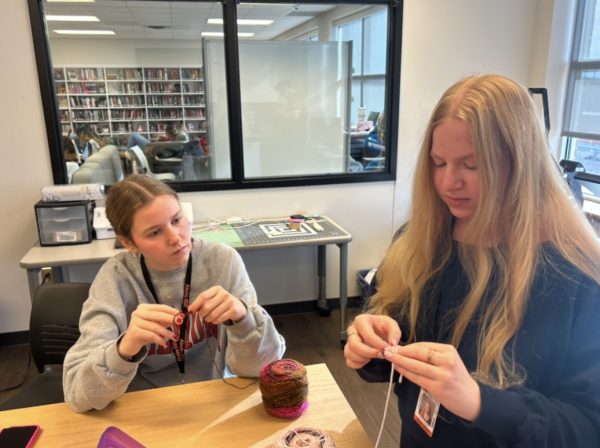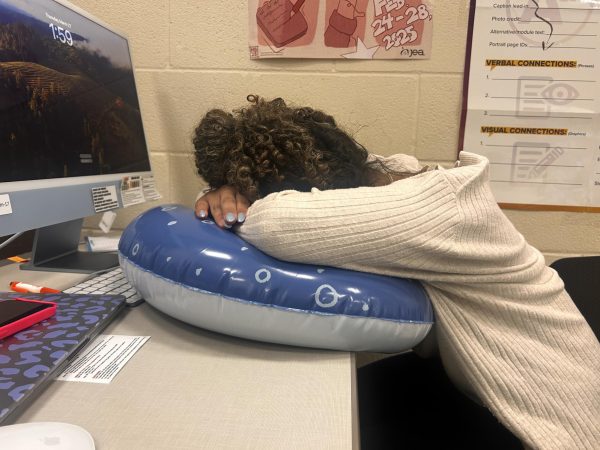“Wonder Woman 1984” – A Film With Some Problems
Dec. 25 of 2020, DC Films released a film controversial to its fans — “Wonder Woman 1984.” Directed by Patty Jenkins, the film starred many widely-known actors, the most notable of which being Gal Gadot as Wonder Woman, and Chris Pine as Steve Trevor. Despite this, the film in its entirety received fairly mixed reviews from critics, scoring a 60% on both Metacritic and Rotten Tomatoes — and I, for one, agree with this score.
Though the film had its notable cast and visual merits, both were overridden by the movie’s plot. 2 hours and 35 minutes long, the plot of “Wonder Woman” was just as long as it was disorienting.
The movie opens with young protagonist Diana Prince competing in a tournament against other, older Amazons of Themyscira. In it, she remains in first place until falling off of her horse and falling behind, prompting her to take a shortcut and attain first place again for the rest of its duration. However, another character, Antiope, removes her from the competition for her dishonesty in taking the alternate route — a lesson of truth important to the movie’s core theme, or at least, what should have been.
In the movie’s present, 1984, Wonder Woman is shown preventing a robbery of a mall’s antiquities, however keeping her identity as Diana a secret. She is shown to work at the Smithsonian Institution, with new employee and shy geologist, Barbara Minerva. The FBI later tasks the institution to identify the stolen antiques, and they find a citrine gem, later titled the Dreamstone, an item able to grant the holder with a wish. Diana passively states she would wish for her past lover, Steve, to return, while Barbara later states she would like to be more like Diana.
The film’s antagonist, failing businessman Max Lord, wants the Dreamstone for himself — an entirely unique villain, for sure — and so he tricks Barbara into giving it to him. He later uses his wish to “become” the Dreamstone, thus rendering him able to grant people’s wishes in exchange for his own desires — which is, for the first half of the film, oil for his business.
The group — Diana, Barbara and Steve — later comes to realize the wishes granted by the stone come with a price: though the granted gains their wish, they also lose their greatest strength, and the effect can only be withdrawn by renouncing the wish. Barbara and Diana, however, refuse to renounce their wishes, although Diana continues to lose her powers, and Barbara, her humanity.
In his mission, Max Lord himself loses his own physical health as he continues to grant others’ wishes. To counteract this, Max decides to grant wishes on a global scale (through a relatively unexplained global broadcasting system), and use their wishes in exchange for his recovery.
Meanwhile, Diana formally decides to renounce her wish. She follows Max Lord to the headquarters of the machinery, where she encounters Barbara, now aligned with Max Lord, and also having received the wish to be an “apex predator” — transforming her into a creature similar to a cheetah. Upon defeating her, Diana confronts Max Lord, and uses her lasso of truth to communicate with the world through him, convincing the world, and Max as well, to renounce their wishes.
In concept, the storyline of the film seems adequate enough. However, the movie’s portrayal of its story resulted in its plot seeming aimless, and its conclusion, unearned. The choices characters made did not feel out of their own decision making, but rather, because the plot dictated it. Certain occurrences did not feel a part of the rest of the film, but instead, something added as a “twist” to add flair. The movie’s struggle to create a decent story, as well as conveying it in a way friendly to the viewer, was a flaw underlining the entirety of the film.
Tone, and the movie’s confusion in finding one, is a flaw of its own. With the film incorporating a more realistic graphical quality, it was expected of it to take on a more mature, realistic tone, maybe even surpassing its previous in that regard — but the film seemed to steer in the opposite direction. Rather, certain scenes felt silly and cartoonish — as if the “comedic break” of the film was its entire duration. Despite this, the movie still wanted to give authenticity to its characters and theme, and so it came across as confused in the tone it wanted to portray.
A quality crucial to a film’s success, though often overlooked by the average viewer, is a movie’s sense of “direction” — a regard entirely excluded from the sequel to “Wonder Woman.” Its characters sometimes seemed unestablished, and other times, over exaggerated, all the while a part of a plot unfocused. A lack of vision for the movie — and an attempt to incorporate everything at once — resulted in a film sprawling across various ideas, without expanding on one in particular.
No film can be entirely bad, nor can one be entirely perfect — and “Wonder Woman 1984” is no exception. Although its visuals are competent and cast recognizable, the film suffers from a lack of focus in many of its other key areas. A lack of development in its plot and characters, as well as the absence of a vision, resulted in a movie considered to taint its original.












